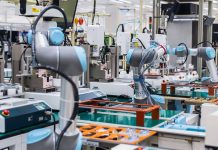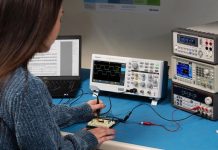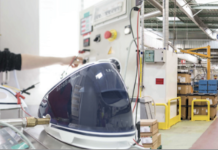
Inarca, to maintain and to consolidate its world leadership in the market of electrical connectors, over these years has gone on investing, not only dedicating huge resources to the research but also acquiring the most advanced technologies for the volume manufacturing, as well as for the development and the implementation of exclusive equipment and plants.
In these years of crisis the world of Italian industries is moving at two speeds. On one side, in fact, are positioned the enterprises characterized by local roots, which mainly produce for the home market and are heavily affected by the negative business trend. Among them, the Italian companies that supply components for household appliances are coping with great troubles, not only owing to the shrinkage of the consumptions of these products in all Europe and particularly in Italy because of the economic crisis, but also due to the strategy accomplished by the main brands of the white good industry consisting in a wide delocalization of the household appliance production towards low labour cost Countries, from Eastern Europe to Turkey and Asia.
Completely different is instead the situation of those enterprises that, thanks to their leadership position in particular product typologies, succeed in exporting, successfully consolidating their presence in the most demanding markets of North Europe, from the professional point of view, as well as in the rising ones, thanks to their technological superiority and competence, to the product quality, to the level of the offered services and to a modern and flexible organizational structure. The capability of exporting, in this economic trend, has then become the main element that differentiates successful enterprises, competitive on a world scale, from those suffering from the crisis and destined to a progressive decline.



The Inarca case
Inarca, Venetian enterprise headquartered in the outskirts of Padua (Italy), which for almost fifty years has been producing electrical connectors mainly used in the household appliance industry, constitutes an example of manufacturing excellence in the component sector. Even more significant excellence if we consider that the production of this company is constituted by electrical connectors, relatively poor components and then apparently subjected more than others to the competition by the producers of rising Countries with low labour cost.
The success of Inarca, which boasts among its customers the most prestigious brands of the household appliance industry, demonstrates in fact how it is possible to create, even in apparently mature industrial fields like the electrical connector production, always new added value through an attentive strategy of investments, on average equal to 10% of the turnover, aimed at the development of innovative components and at the continuous improvement of productive processes. It is thanks to this strategy that Inarca has succeeded in beating its competitors, maintaining and even increasing, despite these difficult years, its turnover, of which the part related to export reaches 55% of the total.
To understand how this has been possible, we must analyse more in depth the characteristics of the product of which Inarca is leader. As a matter of fact, it is true that the electrical connector, especially in the typologies used by the household appliance industry, is a very low cost product, formed by a small number of elements: the plastic container and some metal contacts. Nevertheless, despite its apparent simplicity and its modest economic value, the connector holds a strategic importance for all the applications in which it is used, because its failure damages the operation of the whole product of which it is part, no matter whether it is a household appliance or a conditioning system, an electromechanical device or a medical instrument.

Therefore, despite its low cost, a very high reliability is mandatory for the connector, much higher than that of any other element of the finished product, even in difficult use conditions, as in presence of vibrations and thermal shocks. Other severe market requirements are added to that, such as the smaller and smaller sizes of the device, the capability of direct connectivity at insulating perforation, high characteristics of dielectric rigidity, insulation and non flammability.
All that in a market context where all the phases of the supply cycle have speeded up and the service level has considerably improved. In particular just the service level, together with the complete mastery of the various technologies that share in the connector production, constitutes one of the strong points of Inarca. This company, in fact, collaborates with the customer in a strict partnership relationship with a service that is extended to all the phases of the supply relationship, from the conception and development of the product of the customer itself for the choice of the best connection solutions among the various parts up to the design and implementation of equipment and automation systems for the production of wirings.

The hidden complexity
If we analyse attentively the particular market field where Inarca operates it is worth observing that it is difficult to reach and to maintain a significant competitive advantage on a world scale for fifty years, producing low added value components. We should anyway consider that the volume manufacturing of electrical connectors hides high complexity that Inarca was able to manage in optimal way by matching, through the mastery of numerous technologies, the characteristics of the used materials with the design features of the product and of the related production process.
The sizing itself of the connector calls for great attention and specific competences, which satisfy the application needs of the various customers and, besides the typically electrical performances of low contact resistance and the connection reliability in time and under different environmental conditions, include also deep knowledge of the process technologies for an economically competitive production in big volumes.
It is for this reason that Inarca has always privileged a vertically integrated business organization, which includes, besides the assembly departments of the finished product, the departments for plastic moulding, metal forming and galvanic processes. It has also in-house developed high skills and an advanced technological structure for the production of moulds, dies, equipment and production systems.
While visiting the company with Gianni Piovesan, founder and president of Inarca who has illustrated us the characteristics of the corporate productive processes, we have understood how much it is difficult for other enterprises to compete with Inarca in technological terms. All production systems by Inarca, in fact, are manufactured by making use of the highest possible automation level today. In particular, this is clear for the departments involving the highest investment, such as those for the metal part forming and especially for the plastic moulding, equipped with presses characterized by very high productivity that work 24 hours a day.
This is made possible by the high reliability of the machines and by the implementation of automated systems for the provisioning of materials and the storage and picking of the produced parts. But an even higher automation level characterizes the automated assembly lines of connectors, conceived for high production volumes and very high output. These lines have been in-house developed by Inarca in order to protect the exclusive competences on which the company relies and which constitute an important barrier against competitors.
In the assembly lines developed by Inarca, which resort to modern handling systems with codified pallets and rotary tables, with handling robots and multiple machining stations, the high rate of piece feed and the configuration flexibility are coupled with an absolute control of the production process quality. For this reason, automated instruments that survey the various process parameters on 100% of the production are integral part of the lines, together with the completeness and positioning correctness of the assembled parts.



The role of technology
The research and the development of innovative technologies are central in Inarca’s strategy, as you can notice while visiting the laboratories, the toolshop and the production departments of the company. As far as materials are concerned, some time ago Inarca started a research programme with the Padua University, for the analysis of electrical characteristics and of mechanical fatigue stresses with FEM methods and making use of simulation information systems.
The use of new materials has allowed housing, in miniaturized sizes, up to 20 contacts whose pitch has been reduced from 5 mm to 2.5 mm, while the adoption of new alloys for terminals, together with their sizing with more effective shapes and minor thicknesses, has permitted to decrease remarkably the weight and then the cost of the metal parts of the connector, keeping performances and reliability unchanged. At the same time, the use of No-Flame materials for the connector body, as today requested by several customers, has improved the component use safety.

Even more relevant are the resources dedicated to process technologies, whose control is considered strategic by Inarca for the strengthening of its leader position in the market. Also for this reason, besides production departments, Inarca has recently built a new shed for mechanical constructions, intended for housing the technological systems to implement production equipment, with an organization that is more similar to a pharmaceutical laboratory’s than to a mechanical workshop’s.
In this department, machine tools with micron precision, including systems based on laser technology, EDM wire and die-sinking systems, high speed milling machines and NC grinding machines, together with advanced systems for tolerance measuring and control, are managed by highly skilled personnel, in an environment with controlled temperature to allow the necessary precision of tool, equipment, mould and die machining.



